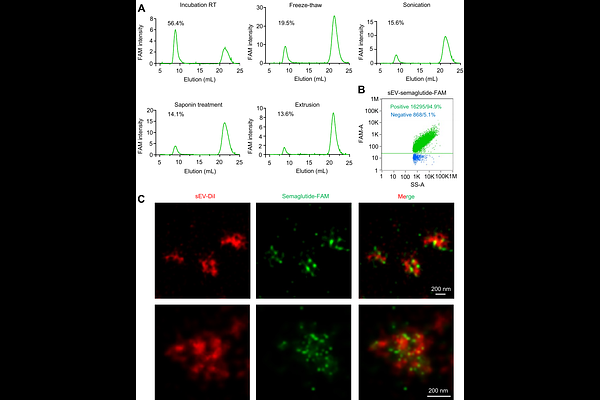Oral delivery of semaglutide and tirzepatide using milk-derived small extracellular vesicles

Oral delivery of semaglutide and tirzepatide using milk-derived small extracellular vesicles
Zhang, Y.; Han, J.; Wu, W.; Dang, B.
AbstractTherapeutic proteins and peptides have revolutionized modern biomedicine. However, the large size and complex structure of these macromolecules preclude their oral administration, greatly limiting their applications in patient care. Biochemical degradation in the gastrointestinal tract, mucus, and cellular barrier are the major obstacles to oral development. Small extracellular vesicles (sEVs) are natural nano lipid vesicles serving as essential vehicles for intercellular communication. sEVs are resistant to biochemical degradation, permeable to mucus barriers, and can penetrate cellular barriers. sEVs are thus considered the next-generation vehicles with the potential for oral peptide/protein drug delivery. Herein, we report the use of milk-derived sEVs as delivery vehicles to achieve successful and highly efficient oral delivery of two therapeutic GLP-1 receptor agonists, semaglutide and tirzepatide. We showed that semaglutide and tirzepatide can be efficiently loaded onto sEVs in vitro, and oral gavage of semaglutide-loaded sEVs or tirzepatide-loaded sEVs can effectively lower blood glucose levels in db/db mouse models. This study demonstrates that sEVs is a platform technology for oral peptide drug delivery and opens a new avenue for oral peptide/protein therapeutics delivery.